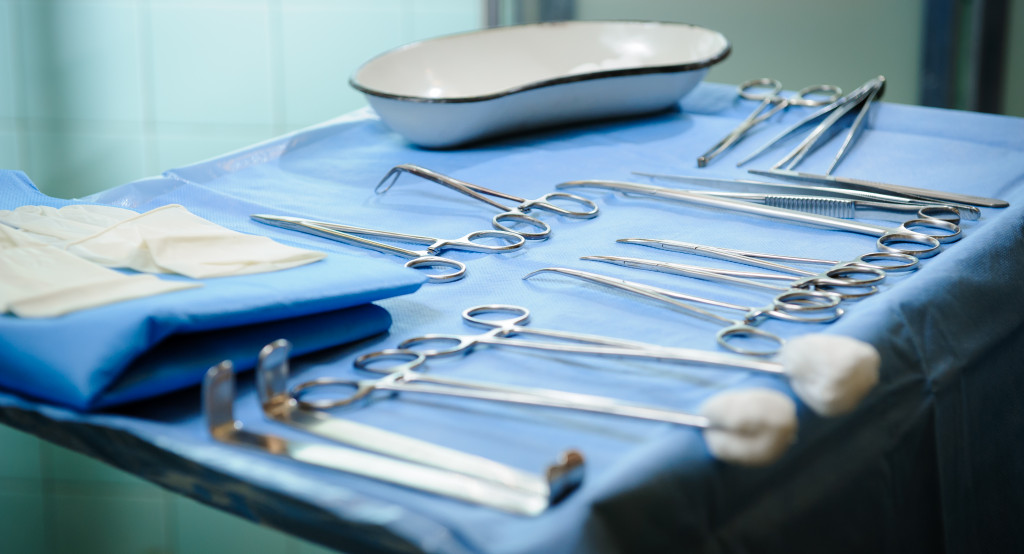- Ensure proper maintenance of medical tools through regular cleaning, sterilization, and inspection.
- Wear the necessary PPE when handling medical tools and equipment.
- Provide staff with training on how to use and maintain the tools safely so that they are aware of manufacturer specifications.
- Store medical tools in clean and dry containers or cabinets, and inspect them regularly for damage.
- Implement secure storage measures such as locks or alarm systems to protect valuable medical equipment from theft, damage, or misuse.
Medical tools and equipment are essential components in healthcare delivery. They are the lifeline that connects patients with healthcare providers. However, these tools can be hazardous if not safely handled and maintained.
Proper medical tools and equipment care is critical for healthcare professionals and patients’ protection and safety. Here are some insights on how to keep your medical devices safe and in good working condition.
Proper Maintenance
Taking proper care of medical tools ensures their longevity and efficiency. Regular cleaning, sterilization, and maintenance are essential steps that need to be taken to preserve medical instruments.
One innovation that has become an essential tool for medical professionals is the use of portable UV light equipment. This device uses ultraviolet light to kill bacteria and viruses, making it an indispensable tool for medical care facilities. Ensuring proper maintenance of medical tools not only secures their longevity but also helps prevent the spread of infections and diseases.
Regular Inspections
Regular inspections are essential for the early detection of any damages or failures. Inspecting your tools regularly can help you identify any potential danger or safety concerns. You should check for any loose parts, cracks, rust, or other signs of wear and tear in your tools. Only use tools that are in good condition and meet the manufacturer’s specifications.
Personal Protective Equipment (PPE)

Personal protective equipment (PPE) is necessary to prevent the spread of pathogens and to protect healthcare professionals from exposure to hazardous materials. PPE includes gloves, face shields, goggles, masks, aprons, and gowns. Always wear the necessary PPE when handling medical tools and equipment.
Training
Regular training is essential for all healthcare professionals handling medical tools to help them understand how to use and maintain them safely. Following the manufacturer’s instructions for use, maintenance, and storage is essential. Healthcare facilities should have a system for ongoing training and evaluation of their staff to ensure they are adequately equipped to safely handle equipment.
Proper Storage
Proper storage is essential to protect medical tools from damage or contamination. All medical devices should be stored clean, dry, and organized. Improper storage of medical devices can lead to cross-contamination, infections, and even fatal errors in healthcare delivery.
The Importance of Proper Storage
The primary reason for proper storage of medical tools is infection control. The devices must be kept in a clean and dry environment to avoid the growth of bacteria, viruses, and fungi. If not adequately stored, medical devices such as surgical instruments, syringes, and other equipment can harbor harmful microorganisms that can cause patient infections. Inadequate storage can also lead to premature wear and damage to the tools, reducing their effectiveness and lifespan.
Types of Storage for Medical Tools
There are different types of storage for medical tools. One of the most common types is containers or trays lined with sterilization wraps or pouches. These containers have a lid that seals and protects medical tools from physical damage, moisture, and contamination. Another storage option is cabinets with doors to store medical equipment or supplies.
Cabinets with doors protect the equipment from accidental bumps or environmental exposure. Other storage options include wall-mounted storage, sterile instrument storage, and transportation containers meant for moving the equipment from one location to another.
Best Practices for Medical Tool Storage
Proper storage of medical tools doesn’t end with selecting the right equipment or storage unit. It’s essential to know the best practices for storage to ensure the mechanisms remain clean, sterile, and safe to use.
Always store medical tools in clean and dry storage containers or cabinets. Also, regularly inspect the containers and trays for damage, and replace them if necessary. Most importantly, label all containers and instruments to avoid confusion and provide an easy retrieval system.
Security Measures for Medical Tool Storage
The security of medical tools and equipment is paramount in healthcare settings. It’s essential to ensure that the devices are secure from theft, damage, or misuse. Security measures such as secure storage cabinets with locks or alarm systems can be put in place to protect valuable medical equipment.
The Bottom Line
Maintaining the safety of medical tools is essential for patient safety, healthcare provider safety, and the proper functioning of tools. As a healthcare professional, you should ensure that all tools and equipment are well-maintained, inspected regularly, and only used by well-trained professionals. Following these guidelines should help reduce the hazards of medical devices and equipment use while increasing their lifespan and effectiveness.




